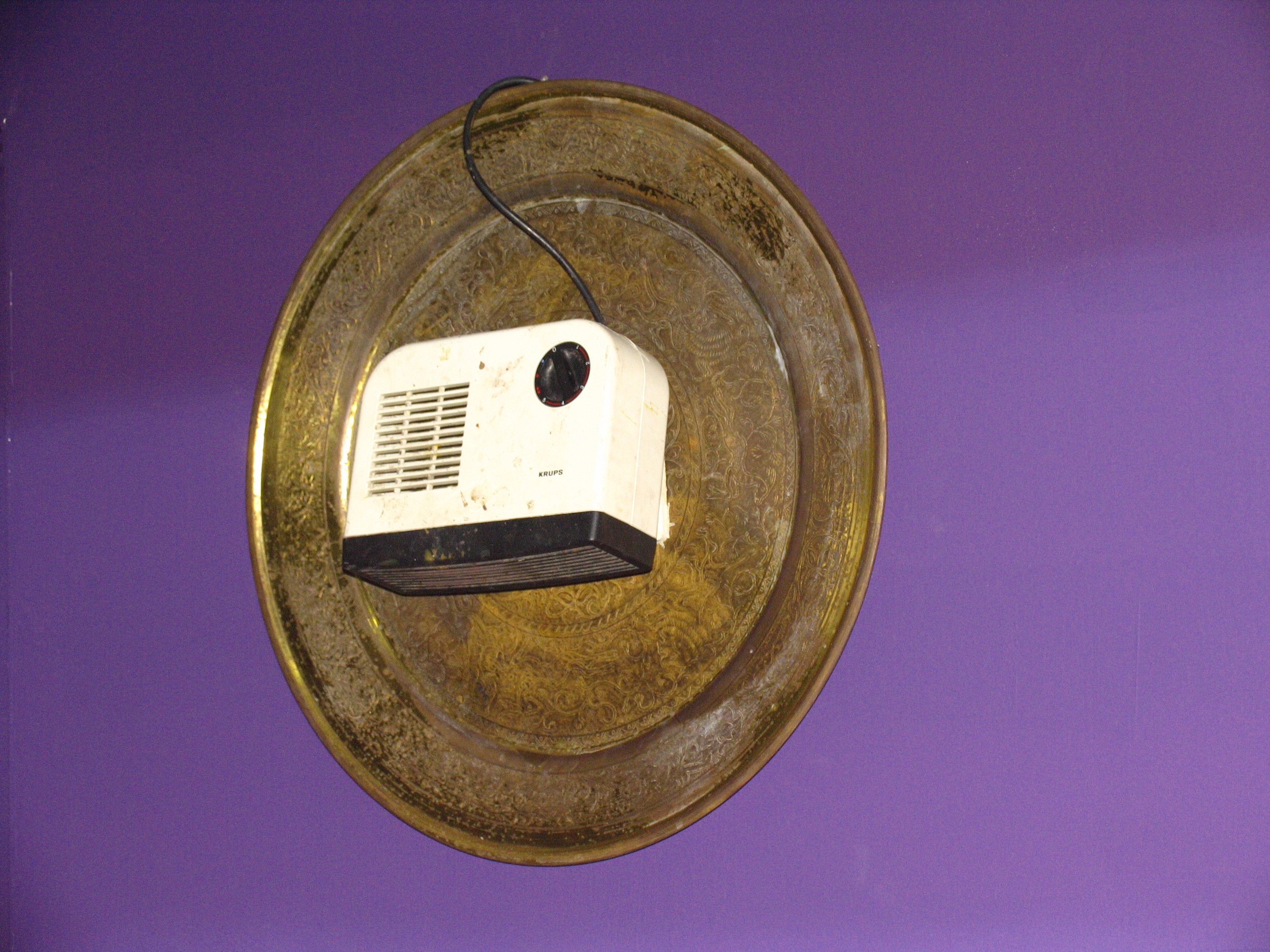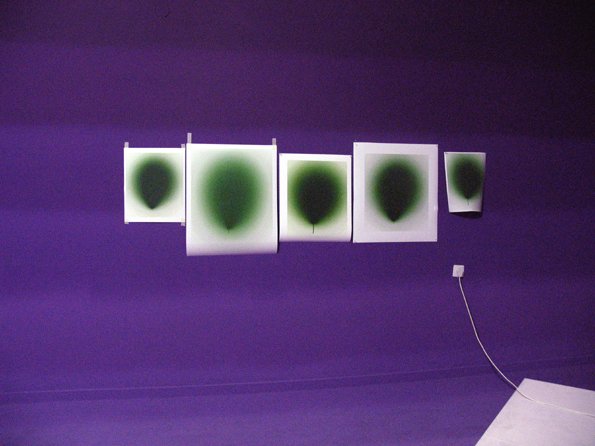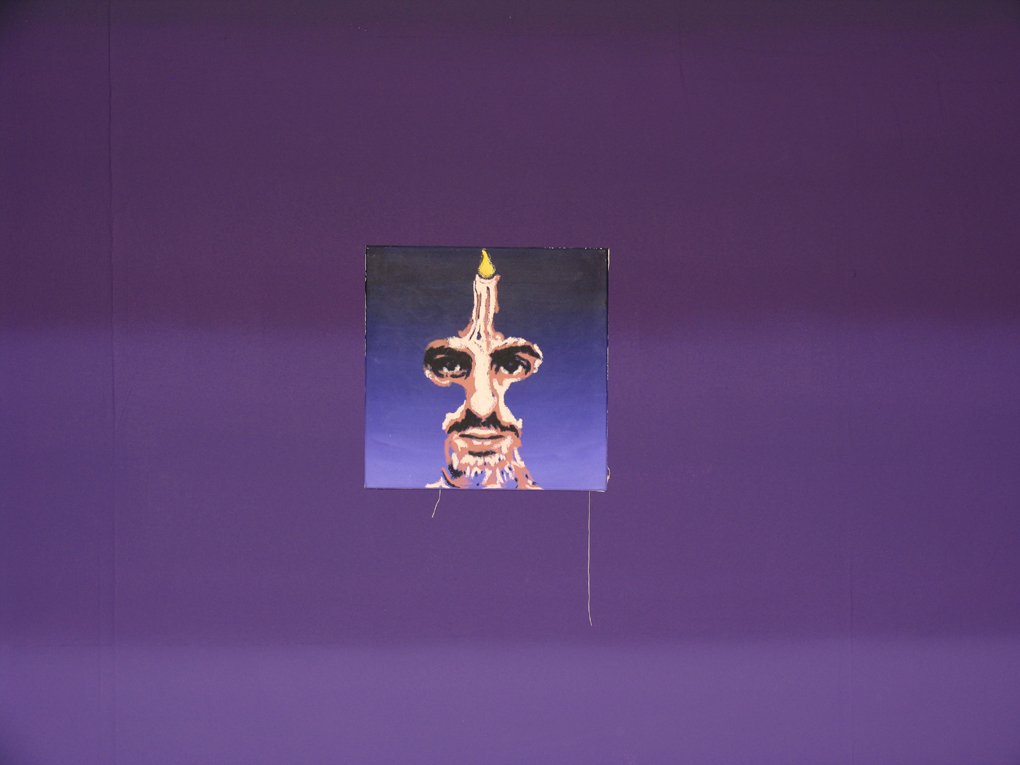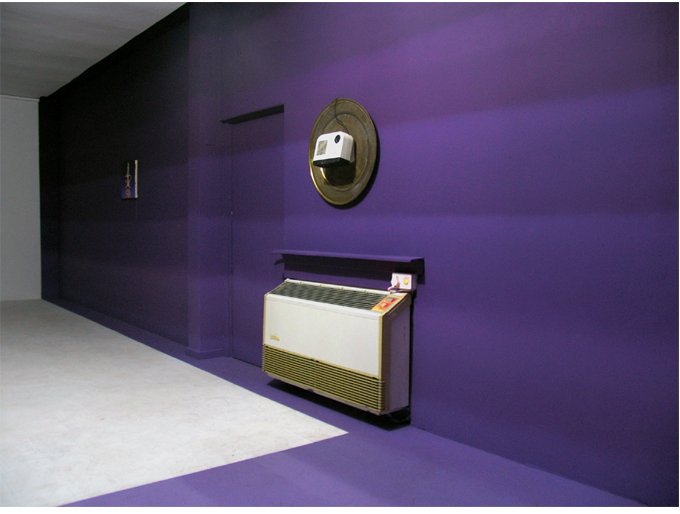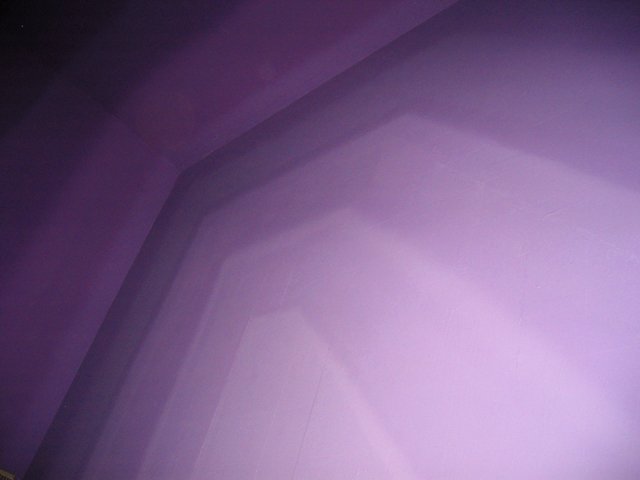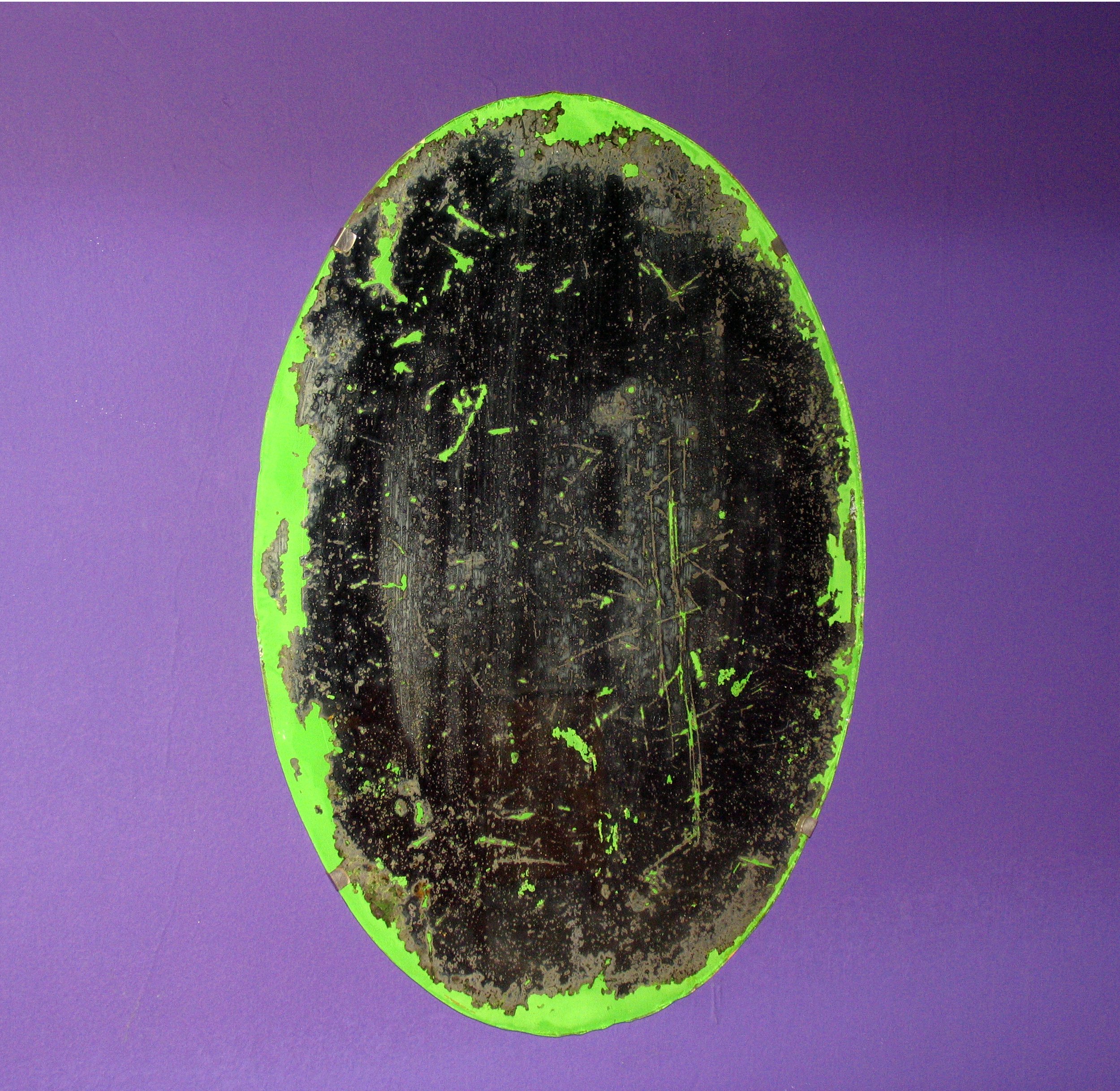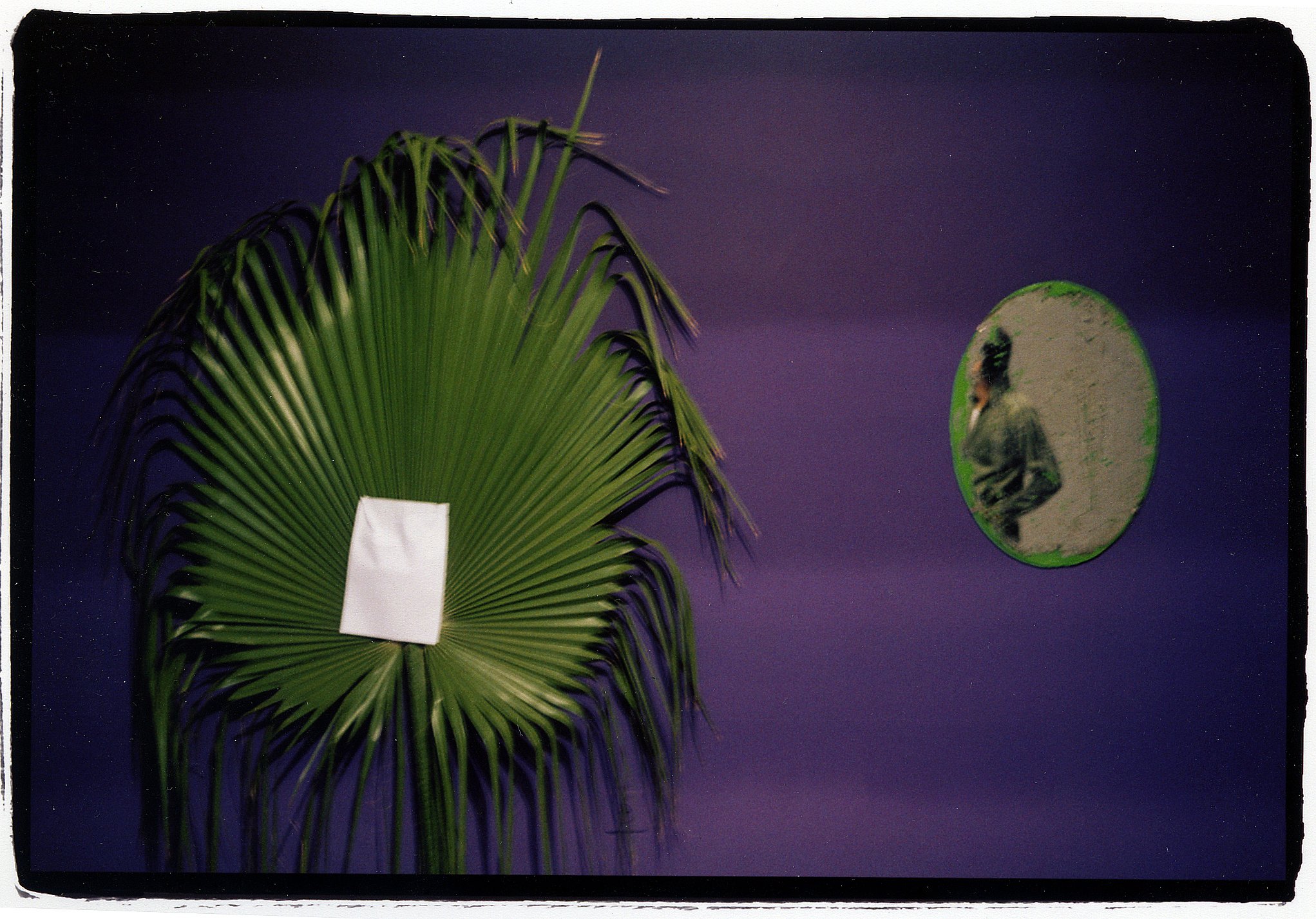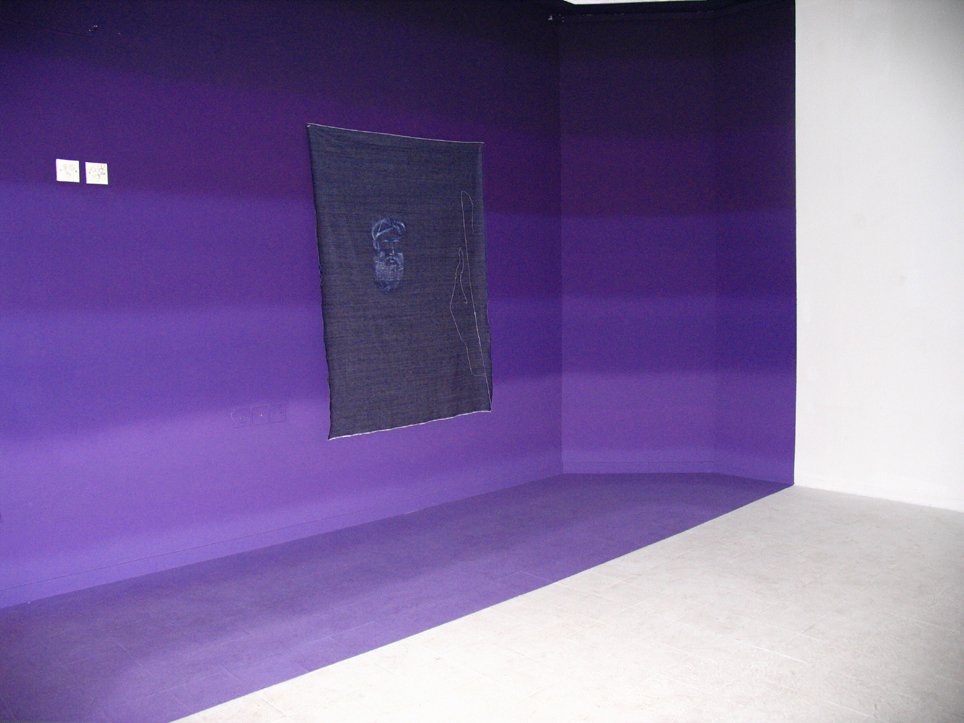Sgula (2005)
Solo exhibition at Kav 16 Gallery, Tel Aviv
Curator: Galia Yahav
“The amalgamation of all the elements Sgula comprises of creates the magic talisman which is the work Sgula, generating the revelation of a mystical aspect which has no direct mimetic representation in any of its plastic components.
The suggestive-fragmentary view contains within it pieces of rituals that gain their experiential-cognitive intensity from distinct Mizrahi-canonical norms assimilated into the sphere of art. The evocation and restructuring of the ritual which is the implicit backbone of the installation is a moment shrouded from sight, which occurs as a recollection in a Deep Purple space. Indeed, Petel draws on memories related to the psychedelic spheres of existence, through the uproar of Deep Purple’s loud wall of hard Rock music. The silenced music appears as hard silence in the guise of the deep purple gallery walls. The color now functions as the deep, from the bottom of which rises the different sound of the peripheral Rock groups that have settled in the margins of canonical culture – in community centers, in neighborhoods that are the spaces of removed or exiled voices. This silenced deep reappears in the installation space in Reverse – a cinematographic return, traveling around the streets of Neve Eliezer, the neighborhood to which the displaced residents of Kfar Shalem/Salame have been forced to move.״
—Shva Salhoov, “Out of the Hidden Depths: Mizrah,” from Essays About Art and Judaism, Tel Aviv: Resling, 2016.
The show was the first to link religious Jewish-mystical motifs with a social condition and with the question of the representation and function of visual materials as art or as holy vessels.The installation, located in a community center at the east Tel Aviv neighborhood of Neve Eliezer, raised the fundamental question of how contemporary art encounters an audience, mainly children, and performs its process depending on the context evolving from the site, in which it is exhibited (site specific). The gallery, which was entirely painted in shades of purple, in a manner that allowed presenting objects alongside a projection of a video piece, housed materials relating to a world of faith and to the relationship between popular culture and religious culture. The video piece Reverse (2005, 7 min.) was projected, documenting a scene of driving in reverse (through the rear window), starting from a Genizah Box (box used to collect old and worn-out holy books) of Rabbincal literature located near the local synagogue, through the streets of the neighborhood (park, commercial center, residential buildings) and up to the entrance square of the community center, where outdoor sculptures of artist Yigal Tumarkin have been placed. Alongside the video were installed piece several materials – a sheet of denim, upon which the drawing of an imaginary Rabbi/mythological leader has been formed through abrasion; a self portrait painting of the artist (Eli Candle (2004)) with a lit candle on top of his head (adopting in this painting his mother's surname (Kendel) as a gesture of grief for his grandfather, who passed away during that time); a palm tree branch, (Sign (2005)) with an A4 printer paper stapled to it; Balloons (2005) – a series of prints of digital painting depicting the accumulation of substance sprayed over a surface to the point of bursting and onwards to dripping; Ofra (2005) – a metal tray with an attached blow heater placed above a fixed air conditioner unit in the gallery as a tribute to Ofra Haza, a neighborhood native; and an office desk with a display cabinet simulating a fast food stand.
The installation, which has led to several international shows and two solo shows at the Tel Aviv Museum, dealt with the possibility of consuming art according to particular context (religious/secular, young/mature, professional/random), while in fact maintaining the practice of mourning. The exhibited materials dealt with memory and remembrance, progress and nostalgia, marking and erasing.

